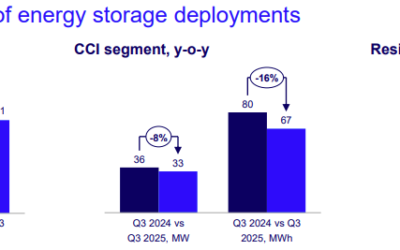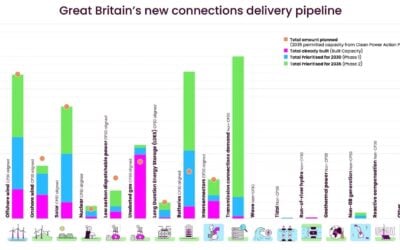The US market for solar-plus-storage is predicted to grow more than twentyfold in the next three years, rapidly expanding from US$42 million in value this year to US$1 billion by 2018, according to GTM Research.
The research firm has issued The future of solar-plus-storage in the US, a report which examines the market for behind-the-meter PV paired with energy storage. Strong growth in solar PV installations, battery costs which fall as much as 30% annually, incentives offered at state level, net energy metering charges and the need for resilient and uninterrupted energy supply are all cited as drivers for this predicted growth.
The head of GTM’s storage division, Ravi Manghani, said the report quantifies “end-customer economics for three end-customer types across multiple utilities”.
According to Manghani, his team found that “for some of those customer-utility combinations, the economics look promising even today”.
Try Premium for just $1
- Full premium access for the first month at only $1
- Converts to an annual rate after 30 days unless cancelled
- Cancel anytime during the trial period
Premium Benefits
- Expert industry analysis and interviews
- Digital access to PV Tech Power journal
- Exclusive event discounts
Or get the full Premium subscription right away
Or continue reading this article for free
According to GTM, energy storage is nearing a “tipping point” in the US, with California’s three investor-owned utilities mandated to install over 1.325GW by 2020 in order to accommodate renewables and protect the grid and Tesla poised to open up its Nevada ‘Gigafactory’, which will provide battery packs to stationary storage applications as well as to the company’s range of EVs. A tax incentive of up to 30% is available for storage if coupled with solar in certain circumstances and using storage can lower the upfront cost of a PV installation, by reducing the required system size.
Of the rapid increase in storage deployment to come, the majority will be installed for commercial users, GTM said. Installations for commercial PV system owners will rocket from a penetration of 1% of installed solar systems to 11% by 2018. The main reason given for the expectation of a stronger performance in the commercial space is that rates of return are better than for residential – commercial system users will be able to save between 20% and 30% on their utility bills. In the US we have already seen that managing demand charges using storage is considered attractive enough that SolarCity has rolled out its commercial storage product, DemandLogic, nationally, while its residential counterpart remains a more limited pilot deployment.
A recent report by rival research firm IHS meanwhile, looked at the global market for residential systems and asserted that these will grow tenfold between now and 2018, with IHS predicting installations to grow from 90MW this year to 900MW.
US Solar-Plus-Storage Annual Market Size Forecast. Image: GTM “The future of solar-plus-storage in the US”.
Both sectors will grow rapidly in the next few years, but residential solar-plus-storage will not be as economically attractive as commercial, with the latter expected to lead deployement. Image: Sunrun facebook page.
The GTM report takes a detailed look at the situation in the US state-by-state. Among its key forecasts on a regional level is that, due to the sheer quantity of deployed PV capacity, California will lead among US states for energy storage as well.
However, as this site and others have found previously, and as GTM Research points out in the latest report, the lack of recognition at a regulatory level for the multiple possible uses a single battery system can offer, known as ‘benefit stacking’, will continue to provide an economic barrier. For example, technically speaking a commercial storage system owner could not only use their battery to reduce their own demand charges, but in theory could also provide ancillary services to the grid such as frequency regulation. Stacking these two benefits of energy storage together would obviously boost the economic attractiveness of such systems.
Incidentally at grid scale, Oncor, a Texas electricity transmission and distribution operator requested in November from the state’s public utilities’ commission (PUC) permission to install up to 5,000MW of energy storage, from which the benefits could be stacked thus. Commenting briefly on Oncor’s plan, Ravi Manghani told PV Tech Storage that: “Oncor’s proposal is unique as the first one that’s asking a PUC to look at all benefits stacked together and allowing one entity to monetize those benefits.” Manghani said some groups are looking to push at state and national level for new asset classification for storage to recognise all these different aspects.





